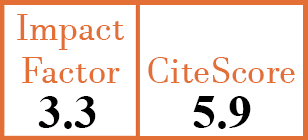Full Papers
Prevalence of hepatitis B virus infection and risk of reactivation in rheumatic population undergoing biological therapy
M.C. Ditto1, S. Parisi2, V. Varisco3, R. Talotta4, A. Batticciotto5, M. Antivalle6, M.C. Gerardi7, M. Agosti8, R. Borrelli9, E. Fusaro10, P. Sarzi-Puttini11
- Rheumatology Unit, Department of General and Specialistic Medicine, Azienda Ospedaliera Universitaria Città della Salute e della Scienza di Torino, and University of Padova, PhD Program in Clinical and Experimental Sciences, Padova, Italy.
- Rheumatology Unit, Department of General and Specialistic Medicine, Azienda Ospedaliera Universitaria Città della Salute e della Scienza di Torino, Turin, Italy. simone.parisi@hotmail.it
- Rheumatology Unit, Department of Internal Medicine, San Gerardo Hospital, Monza, Italy.
- Rheumatology Unit, Department of Clinical and Experimental Medicine, University of Messina, Azienda Ospedaliera Gaetano Martino, Messina, Italy.
- Rheumatology Unit, Department of Internal Medicine, Ospedale di Circolo - Fondazione Macchi, ASST-Settelaghi, Varese, Italy.
- Rheumatology Unit, University Hospital ASST-Fatebenefratelli-Sacco, Milan, Italy.
- Rheumatology and Clinical Immunology Unit and Department of Clinical and Experimental Sciences, Spedali Civili and University of Brescia, Italy.
- Rheumatology Unit, University Hospital ASST-Fatebenefratelli-Sacco, Milan, Italy.
- Rheumatology Unit, Department of General and Specialistic Medicine, Azienda Ospedaliera Universitaria Città della Salute e della Scienza di Torino, Turin, Italy.
- Rheumatology Unit, Department of General and Specialistic Medicine, Azienda Ospedaliera Universitaria Città della Salute e della Scienza di Torino, Turin, Italy.
- Rheumatology Unit, University Hospital ASST-Fatebenefratelli-Sacco, Milan, Italy.
CER13270
2021 Vol.39, N°3
PI 0546, PF 0554
Full Papers
PMID: 32940216 [PubMed]
Received: 02/03/2020
Accepted : 25/05/2020
In Press: 16/09/2020
Published: 21/05/2021
Abstract
OBJECTIVES:
Hepatitis B (HBV) is a common comorbidity among rheumatic patients. The prevalence of HBV infection and the rate of reactivation remain unclear. The literature data suggested a higher risk in chronic than in past infection. Currently, the literature data are mostly focused on anti-TNF and rituximab. This retrospective observational study aimed to analyse the prevalence of HBV infection and the risk of viral reactivation in a population of rheumatic patients undergoing anti-TNF and non-anti-TNF agents.
METHODS:
We analysed 1216 rheumatic patients, treated with both csDMARDs and bDMARDs between 2006 and 2017. Serologic markers for HBV (HBsAg, anti-HBs, anti-HBc) were performed prior and during biologic treatment. Patients with chronic or resolved infection were monitored every 3 months.
RESULTS:
The prevalence of HBV in our cohort was 15.7% (chronic infection: 0.4%, resolved infection: 12.6%, anti-HBc positivity alone: 2.6%). 12 (6.2%) out of 191 HBV infected patients experienced a reactivation. All of them showed markers of past infection. One patient experienced HBV reactivation despite lamivudine. Only one patient experienced acute hepatitis, probably due to the interruption of immunosuppressors in anticipation of surgery, not preceded by any HBV prophylactic treatment.
CONCLUSIONS:
HBV reactivation is a rare event in patients treated with a bDMARD and it can also occur while taking lamivudine, not only in chronic carriers (as per the literature data) but also in inactive ones. Regular screening followed by prompt treatment can prevent symptoms or complications. Due to the risk of hepatitis following the immune reconstitution, an antiviral therapy should be considered in the case of sudden discontinuation of csDMARDs or bDMARD.


